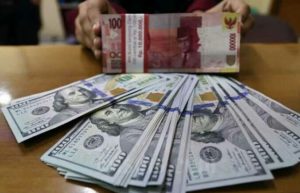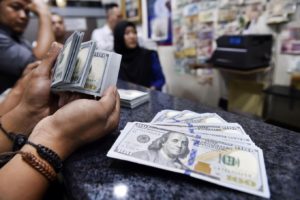
household consumption." width="300" height="200" /> Indonesia is exempting most goods from a luxury tax in a bid to boost household consumption.
Jakarta, 04 Rajab 1437/11 April 2016 (MINA) – Indonesia’s plan to raise people’s (annual) non-taxable income by 50 percent to IDR 54 million (approx. USD $4,090) is estimated to add 0.3 percentage point to consumption growth in Indonesia according to Indonesia’s Finance Minister Bambang Brodjonegoro.
Last week, Brodjonegoro announced this tax incentive with the aim to strengthen Indonesians’ purchasing power and encourage household consumption, Mi’raj Islamic News Agency (MINA) reported, quoting indonesia-investments.com.
Household consumption, which accounts for about 56 percent of Indonesia’s overall economic growth, has been curtailed in recent years amid slowing economic growth, high inflation and the weak rupiah rate (against the US dollar).
Last year, household consumption growth in Indonesia fell below the 5 percent year-on-year (y/y) mark to 4.96 percent (y/y). Slowing consumption growth was partly responsible for Indonesia’s GDP growth pace of 4.79 percent (y/y) in 2015, the slowest growth pace since 2011.
Also Read: Saudi Arabia Wins Bid to Host World Expo 2030
With the higher non-taxable income Indonesia’s lower middle income segment should have more money to spend, boosting the nation’s household consumption growth back above the 5 percent (y/y) mark.
However, there are doubts whether the 50 percent rise in people’s (annual) non-taxable income to IDR 54 million will indeed have such a positive impact. A little over a year ago the Indonesian government had already implemented such a move and this did not cause a rebound in consumption growth in Indonesia (on 1 January 2015 Indonesia raised non-
taxable personal income by 48 percent to IDR 36 million).
On the other hand, economic uncertainty has eased in 2016 (compared to the preceding year), and this could mean that the new non-taxable income hike may have a better impact.
Contrary to current conditions Indonesia was still plagued by high inflation in 2015 (due to several fuel subsidy reforms in the period 2013-2015), while the Indonesian rupiah exchange rate depreciated significantly in the years 2013-2015 due to (looming) monetary tightening in the USA and sluggish global growth (particularly China’s ‘hard landing’).
Also Read: 148 Products from Indonesia Promoted at Sarawat Superstore Jeddah
Indonesia’s March inflation figure was recorded at 4.45 percent (y/y), which is rather solid for Indonesian standards, while the rupiah has appreciated 4.7 percent (y/y) to IDR 13,144 per US dollar (Bloomberg Dollar Index) so far this year.
Indonesia’s recent decision to lower fuel prices is also expected to have a positive impact on people’s consumer behavior.
The 50 percent hike in non-taxable income would, however, also add inflationary pressures if consumers indeed start spending more.
The move could add 0.6 percent to Indonesia’s inflation. Previous forecasts for Indonesian inflation in 2016 were set at 3.5 – 4.5 percent (y/y). (T/R07/R01)
Also Read: Packaging Industry Supports Halal Ecosystem
Mi’raj Islamic News Agency (MINA)


































 Mina Indonesia
Mina Indonesia Mina Arabic
Mina Arabic